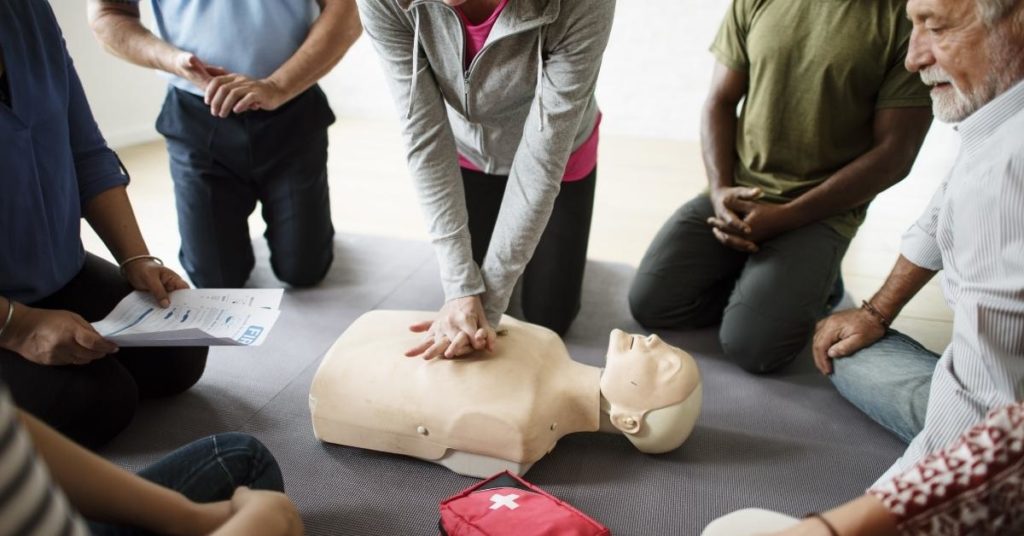Your Clients Need You to be a Responsible Fit Pro with CPR

By Melissa Garcia
Is CPR really that important? As a fit pro you’ve probably been asked for your current CPR a lot of times. But why? We all know that CPR saves lives, otherwise, why would we bother? But have you ever stopped to consider the true reasons annual CPR is so important?
If you ask anyone what they know about CPR, the answer will typically be “compressions and breaths”. While this answer isn’t technically wrong, it leaves out key skills that you walk away from a CPR course with. In CPR, we talk about the 4 Keystones:
- Early Recognition
- Early Access
- Early CPR
- Early Defibrillation
See the trend with the word early? CPR is all about how fast you can react with the proper steps and execution.
Early Recognition is vitally important. In a course you talk about more than just cardiac arrest and practice compressions and breaths. You talk about heart attacks, strokes, respiratory arrest – the signs, symptoms, and necessary steps to assist someone in any of these situations. As a lay rescuer those first seconds are crucial as you’re assessing and determining what needs to happen. Leaving a CPR course, you have much more confidence in recognizing and executing the next steps no matter what you’re faced with.
Consider this – 8 in every 10 cardiac arrests will happen outside of the home. As fit pro’s we’re seeing people throughout the day whether they’re clients, club members, or other staff. You want to feel super confident in recognizing and reacting when any of these people present a concerning sign or symptom. canfitpro CPR courses are specifically geared towards fit pro’s – have you ever looked at the signs and symptoms of a heart attack and thought, “wow, that looks like over exertion during exercise”? If you have, you’re not wrong. But the real question is, are you confident in trying to figure out whether they need to take a break from squats, or call 911?
Early access, CPR and defibrillation all have the same goals – once you’ve passed that recognition stage, how quickly can you react and perform life saving measures for this person? We’ve all heard the tagline “with CPR, seconds count”. It’s a popular tagline for a reason. There is a window of time where CPR is most beneficial – between 3 to 8 minutes. Every minute that passes without defibrillation, chances of survival decreases by 10%. Knowing how limited your window is, it is crucial that you do not hesitate or allow for delay in your reaction.
When you’re taking CPR Courses, you’re doing more than learning, you’re confidence building. As fit pro’s we know, success takes perseverance, practice, and keeping up with your craft. It’s no different for CPR. Showing up every year, being reminded of those key recognitions, practicing compressions and breaths, and mapping out responses for non-cardiac arrest is how you stay responsible to yourself, your clients, your coworkers, and really everyone who has the pleasure of being around you.
